Mediterranean gardens transported Flower Show visitors on a “Riviera Holiday” in Philadelphia recently.
From the Cliffs of Monte Carlos to the shores of Greece, the mood of the Mediterranean pervaded this year’s exhibits. Elegant displays of lemon and olive trees, arbors, and lavender-filled gardens attracted old and young alike for a visit.
Approximately ¼ million people visit the Philadelphia Convention Center annually for the show. This year’s “Rivera Holiday,” which ran from Feb 28 to March 8, was no exception.
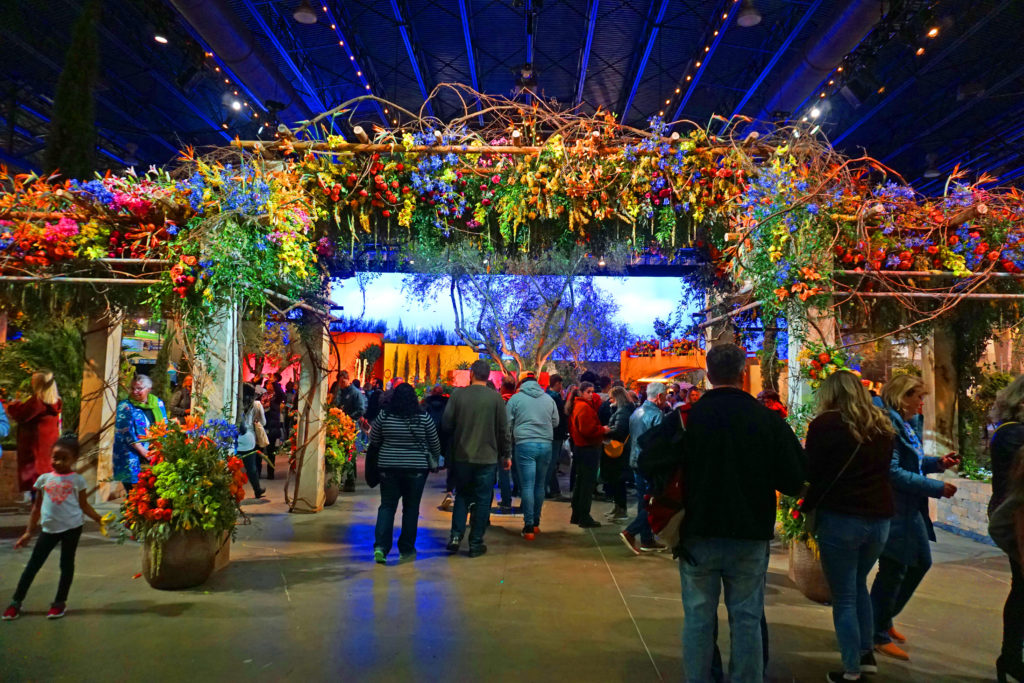
Welcome to Rivera in Philly
Photos by Dave O’Callaghan
The show began with an impressive archway of flowers that framed large landscape exhibits. Fountains, flowers, bushes, and trees appeared throughout the convention center, the work of top designers from the United States and abroad.
Further into the show, floral designs, miniature displays, and other exhibits showcased the work of professional designers and educational organizations in addition to the work of amateurs, both individuals and clubs.
If you have never been to the Flower Show, it is truly a phenomenon. A must see for any garden lover.
Next year should be of special interest for native plant lovers. Titled “Habitat: Nature’s Masterpiece,” it will be held March 6-14, 2021. Mark your calendar!
The Major Award: Landscape category: “Reflection” by Mark Cook Landscape & Contracting
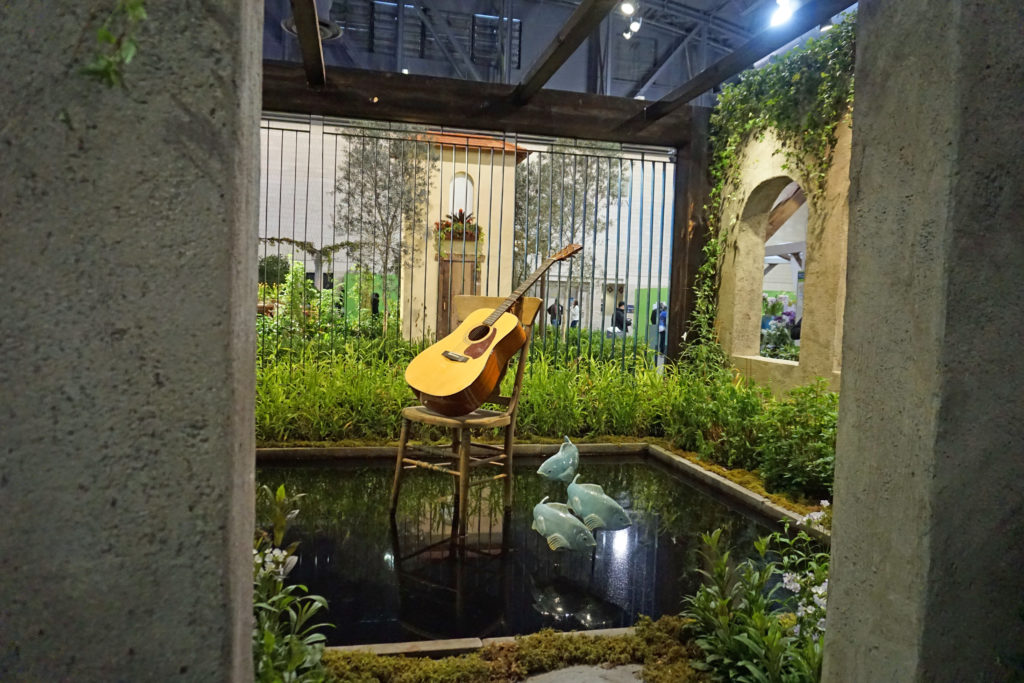
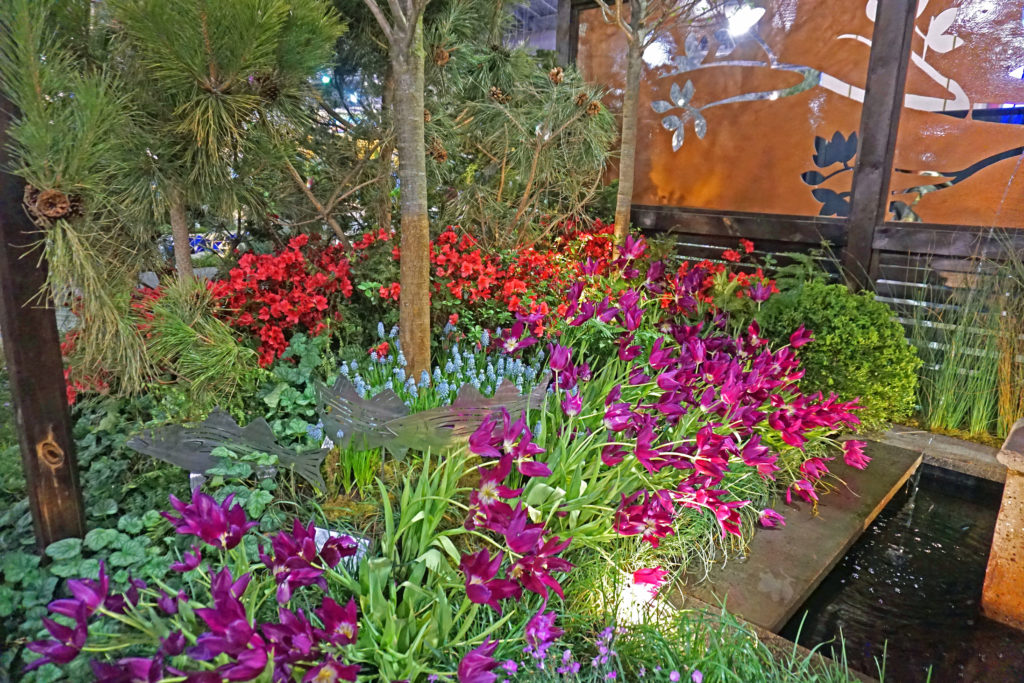
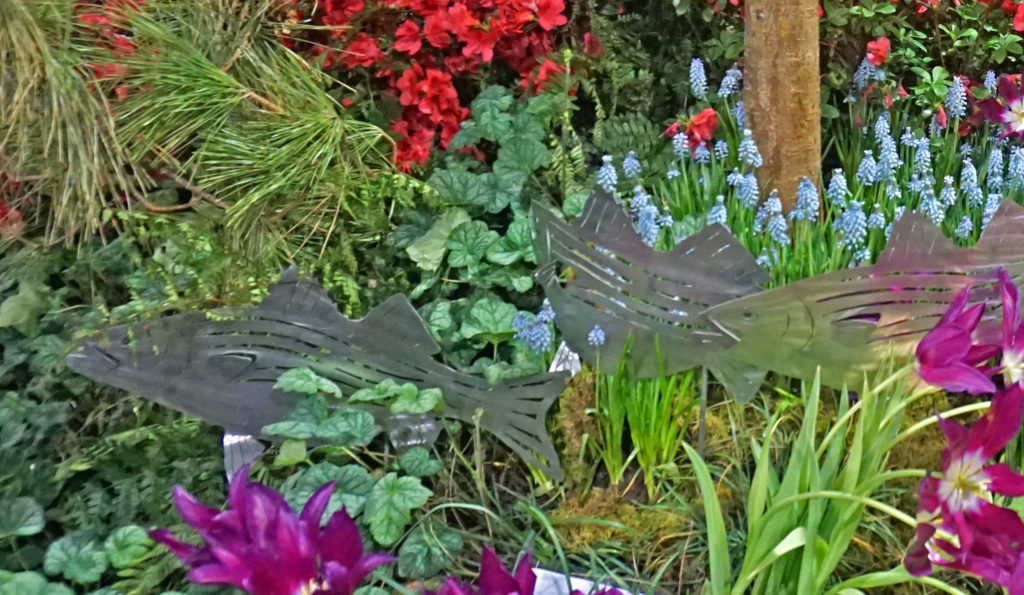
“…A courtyard showcases the beauty of outside living spaces…. Only through the journey of this garden will visitors find the unique walled room built to instill individual reflection.”
Best-in-Show Winner; Floral Category: “Le strada delle Cinque Terre” by Schaffer Designs
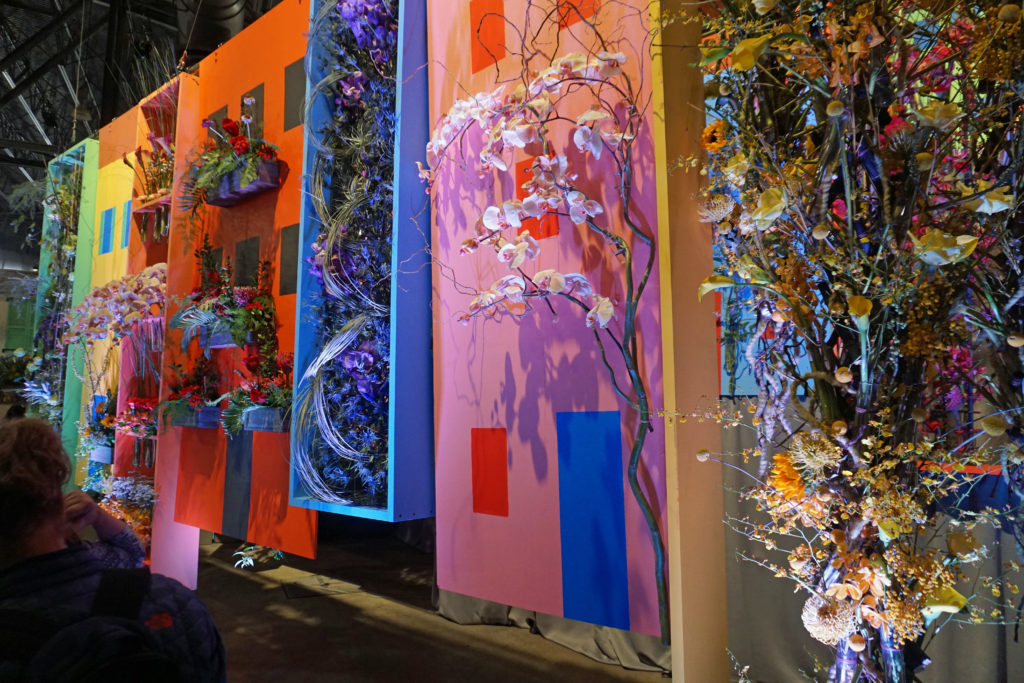
“The Streets of the Five Lands” were inspired by Italy’s ancient fishermen who painted their homes in bold and pastel colors to easily spot them as they returned from sea.”
The American Riviera
One exhibit was especially noteworthy for lovers of plants native to the Piedmont region.

A riparian area was created by growing native plants and vegetation alongside a stream and wetlands. The Environmental Protection Agency (EPA) designed this delicate and stunning exhibit filled with azaleas, irises, and dozens of other plants.
What is a riparian area? It is the land between any size stream, or river, and a forest.
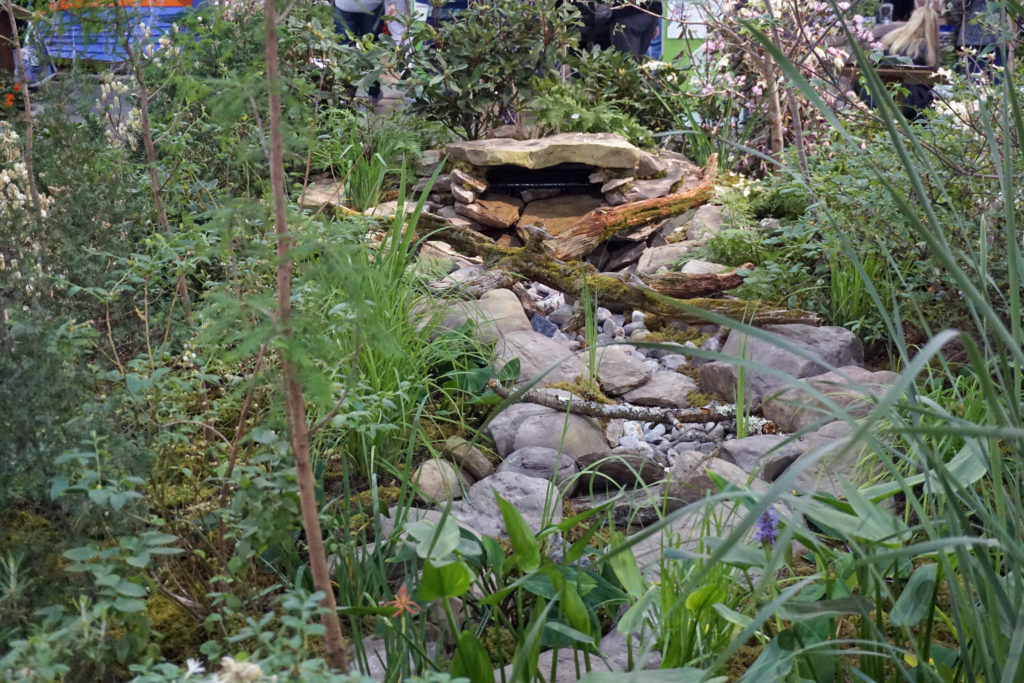
The exhibit includes more than 90 native plants from the Piedmont region. Their exquisite beauty gives every gardener in this region a reason to grow them even if you don’t have a riparian area.
In addition to its beauty, quality riparian vegetation plays a critical role in the landscape. It helps maintain healthy waterways and water quality. This, in turn, affects our own health. The plants filter nutrients, sediments, and other pollutants before they reach the bay or other open sources of water. They also help reduce erosion on stream banks.
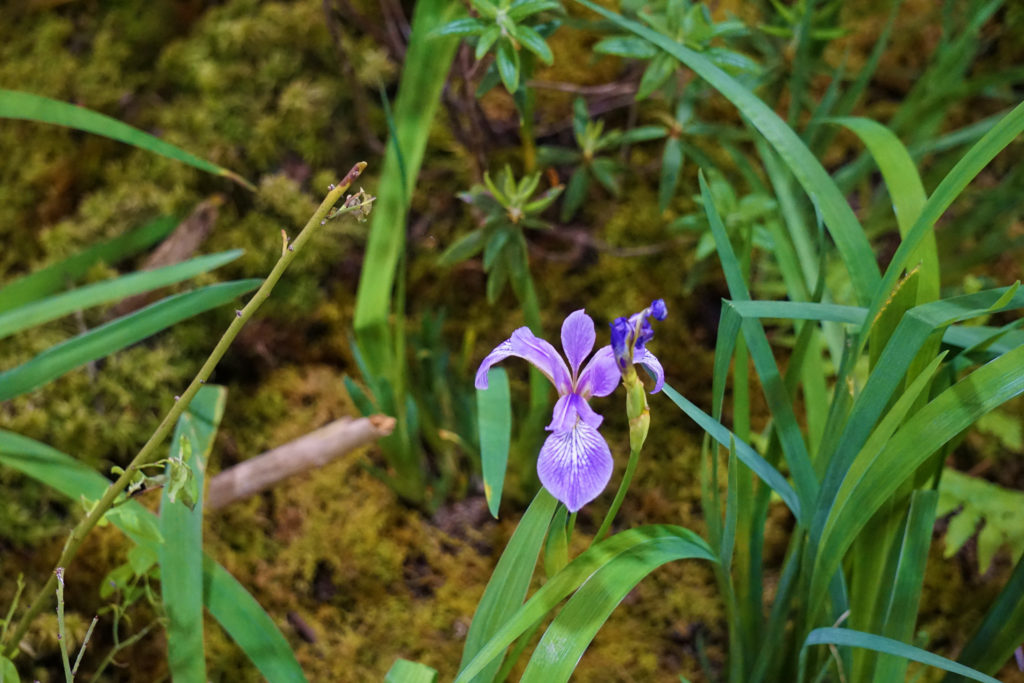
Riparian areas of small streams, and their neighboring wetlands, filter drinking water, sustain aquatic species, and reduce damage from flooding. They provide habitat for waterfall, fish, and aquatic species, according to the EPA.
The EPA found that 24% of rivers and streams in the U.S. do not have healthy riparian forests.
The EPA, which celebrates its 50th anniversary this year, also wanted to illustrate the stunning beauty of native plants and ways in which they can be planted with one another.
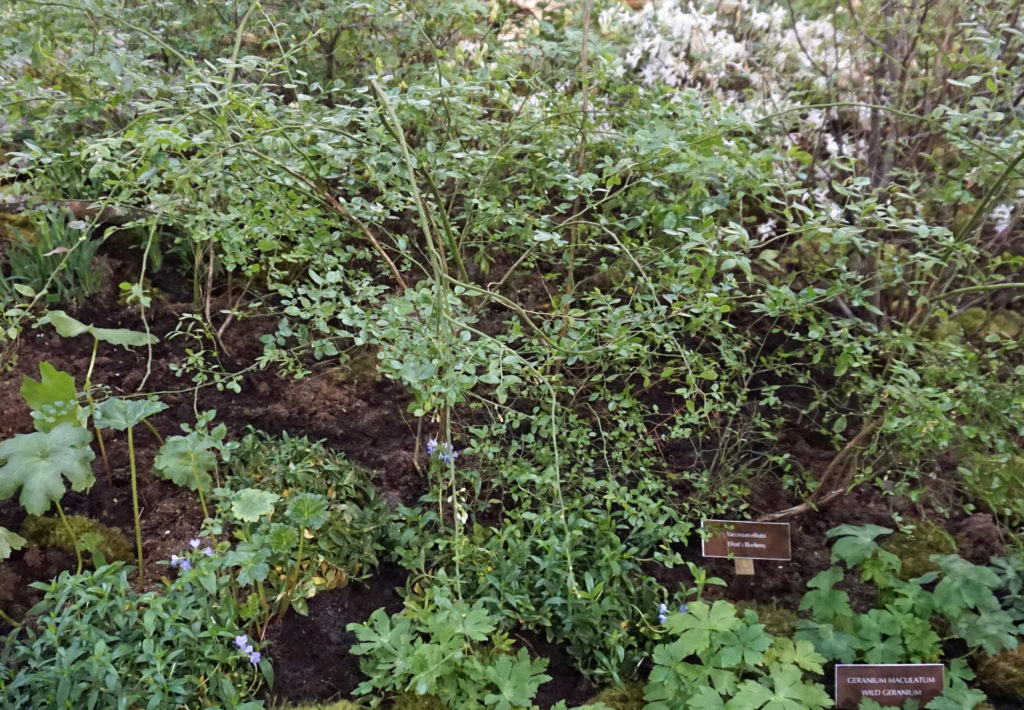
Delicate Elliott’s blueberry, Vaccinium elliotti, arches over smaller plants. Recommended as a good blueberry bush to grow (birds and butterflies enjoy it as well), it grows 4 by 6’ high and wide.
Gardening for Biodiversity Symposium
A “Gardening for Biodiversity Symposium” on March 4 featured keynote speaker Dr. Peter Raven. He and other leading biodiversity, conservation, and sustainability professionals discussed global and local issues about biodiversity as well as other topics.
An internationally renowned botanist, Raven spent 40 years at the Missouri Botanical Garden, and was described by Time as a “Hero for the Planet.” He also received the 2018 Hubbard Medal from National Geographic.
In his outline for his remarks, Raven emphasized the critical issues facing the planet.
“Scientists estimate that approximately one of every five species of plants, animals, fungi, and microorganisms on Earth is in danger of extinction over the next several decades, with perhaps twice that proportion gone by the end of the century.
“We have yet to discover and assign names to the great majority of species; therefore, our causing massive losses of species is analogous to burning a library filled with unread books.
“We understand only vertebrates, plants, butterflies, and a few other groups in any detail and base our extinction estimates on extrapolations of what we know about them. We depend on functional ecosystems for the composition of our air, water, and soil; for controlling erosion and floods; and for the products, including all of our food and many of our medicines, … Therefore, the irreversible loss of species is not only regrettable individually, but in terms of the role they play in the continued functioning of healthy ecosystems.… We have the opportunity to preserve them in many ways, …”
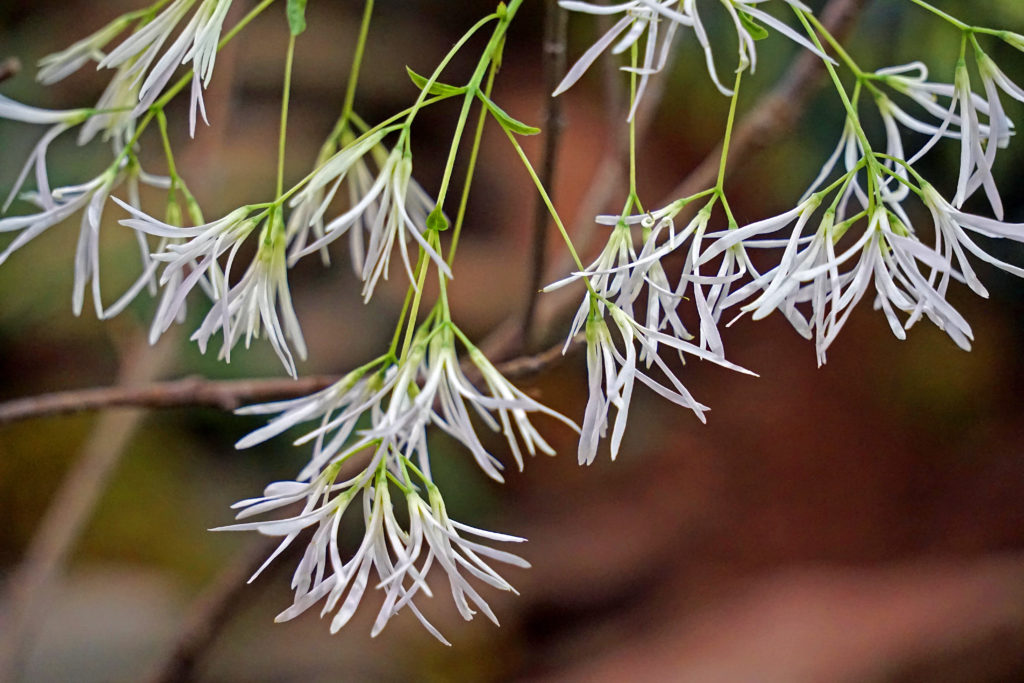
The all-day symposium was sponsored by the Prince Albert II of Monaco Foundation. The The foundation’s US chapter, the Embassy of Monaco in Washington, D.C. and PHS were partners in the production of the symposium.
Since 1829
The Philadelphia Flower Show is the nation’s largest and longest-running horticultural event. PHS has produced the show since 1829. It raises approximately $1 million annually to improve lives in the Philadelphia area by connecting people with horticulture to create beautiful, healthy, and sustainable communities. For more information about the PHS visit https://phsonline.org/
